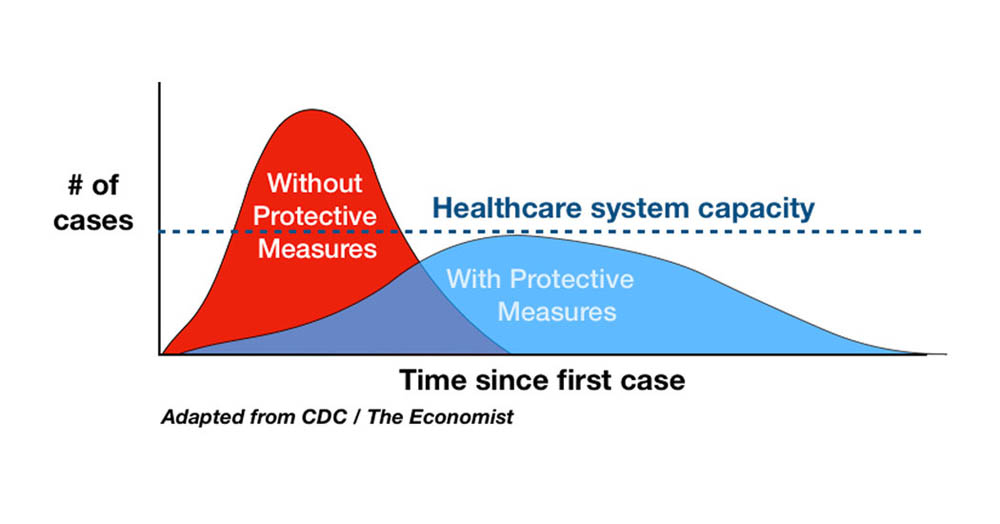We have heard a lot about flattening the curve lately, as it relates to the government’s plan to control the future of the corona virus. But in typical government fashion, it is simply treating the symptoms and not curing the problem.

The curve represents the number of people who will get sick over time. Based on the estimates, if left unchecked, the curve will rise far above the capacity of our healthcare system to treat people. The government’s solution is to suppress the outbreak in terms of the number of people who contract it simultaneously, resulting in the entire epidemic taking longer to carry out. While infections will occur for longer, they will attempt to prevent the healthcare system from being overloaded to where it is unstable to treat patients. It sounds like a practical plan.
But while we are looking at this, what aren’t we looking at? Part of the plan to flatten this curve involves intimidating people to stay in their homes and avoid contact with other people. This is causing many people to lose their jobs. Many businesses are shutting down temporarily or permanently. People are panic buying, emptying shelves of food. While the outbreak curve may have been flattened, another curve is rising. That is a curve of economic problems. Economic problems can quickly lead to more violence with people fighting and killing over resources, depression and suicide, and exhausting food resources and starvation. That is the curve tradeoff.
Consider also that when flattening the curve, the number of people affected by the virus will remain relative the same. However the longer we have our economy on lockdown, the more people will be affected by the economic impact. That curve could be much, much bigger.
And while all this is going on, nobody thought to look back at the original outbreak incidence curve – the one that extended above the healthcare capacity line. Nobody thought to ask, why can’t we just raise the healthcare capacity line? It’s actually quite simple to do, but the government would first have to admit that many of its policies are causing more harm than good. But the government and its lobbyists don’t like to do that.
Here are a few examples.
- There are more doctors and nurses in the United States who aren’t allowed to practice medicine. They are fully qualified and even licensed in other countries where they came from, but the government has put up too many barriers for them to be able to practice in the US.
- There are patent laws which the government could grant immunity to companies for producing supplies in shortage. One example was a respirator valve. While it would be illegal for a company to manufacture these, many individuals have already started 3d printing them. But a company with a larger manufacturing operation would be able to get more of them out faster if they weren’t afraid of being sued.
- The FDA is preventing access to test kits. Companies that have produced test kits for the COVID-19 virus have been unable to distribute or use them, because the FDA wanted them to go through the whole process of approval first. This process can take years. Luckily, the government has already waived this requirement. Why won’t they do it for the others?
- Remove barriers to creating new hospitals. In some areas, the government has laws that prevent new hospitals from opening because they already have one. What sense does that make? They are limiting supply and forcing up prices. Limiting supply is another way of saying “stealing hospital beds from America”.
We can’t completely stop the virus. So is it better to implement draconian laws to risk everying on a plan decided by one central government, that has proven itself incompetent so many times in the past? Is it better to risk many more lives with the economic destruction that follows from trying to stop the inevitable? There are always so many factors in play, that not even the most powerful computer can accurately predict which path will save the most lives. This is why the law of unintended consequences will always prove that a single decision to control the actions of all people by a central government will do more harm than good. The direct damage to freedom and prosperity is a known sacrifice, but this is just the first domino in a series of many. We will not know how many there are until they fall, and that is the most dangerous part of this proposition. Especially when there is a clear alternative to simply increase the capacity of our healthcare system.

